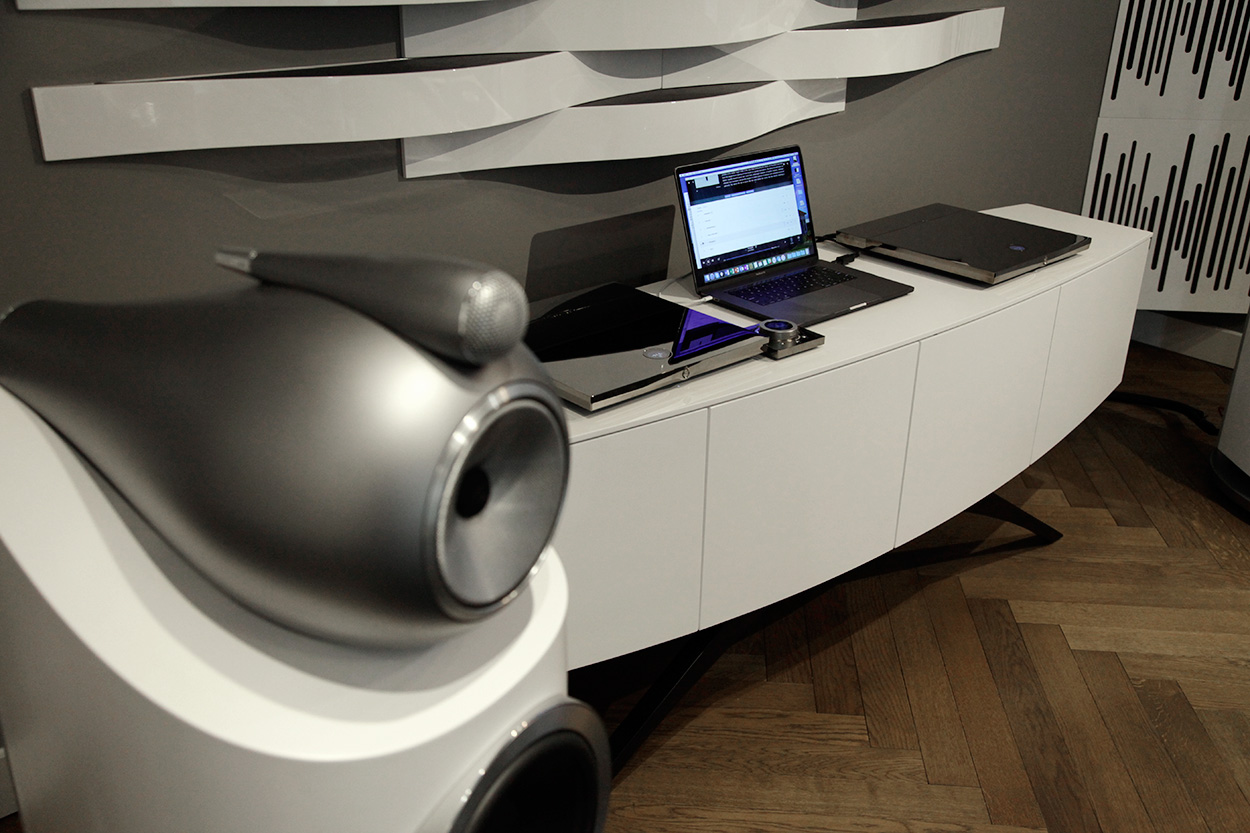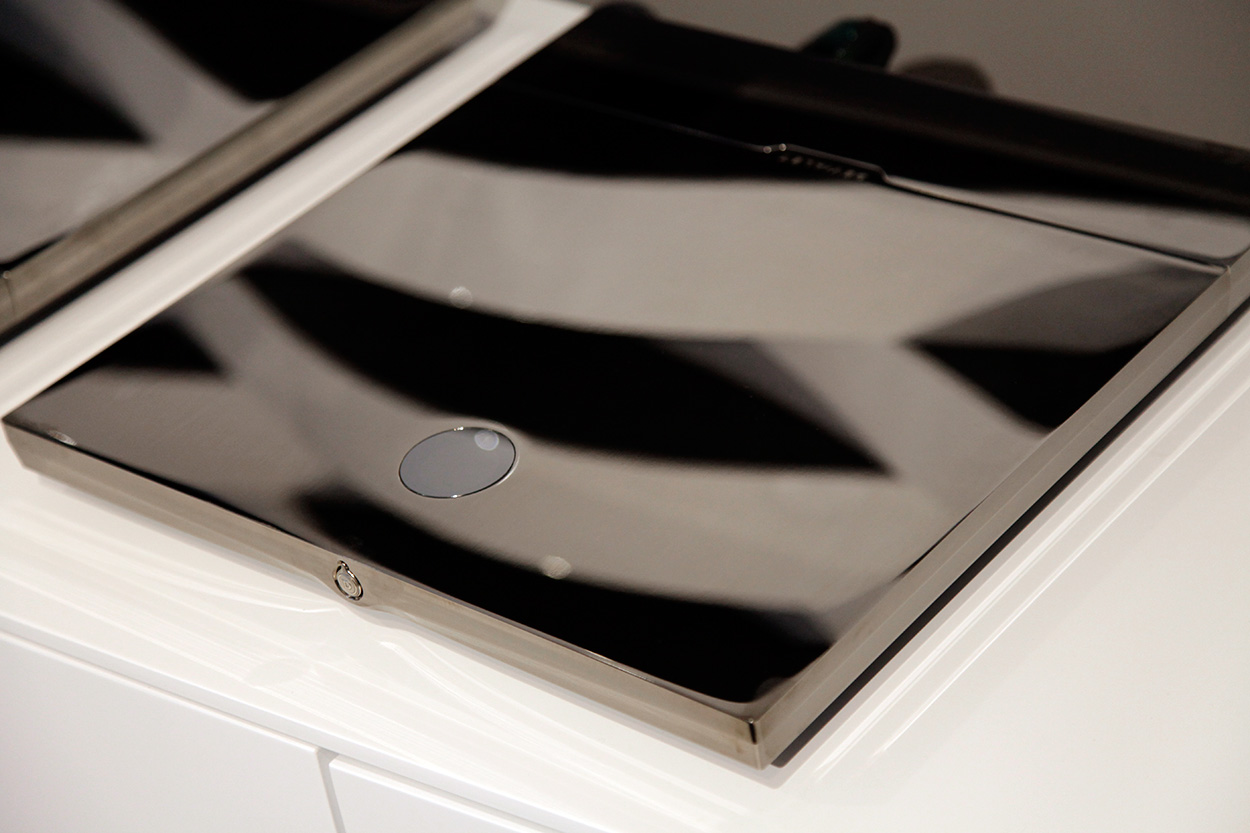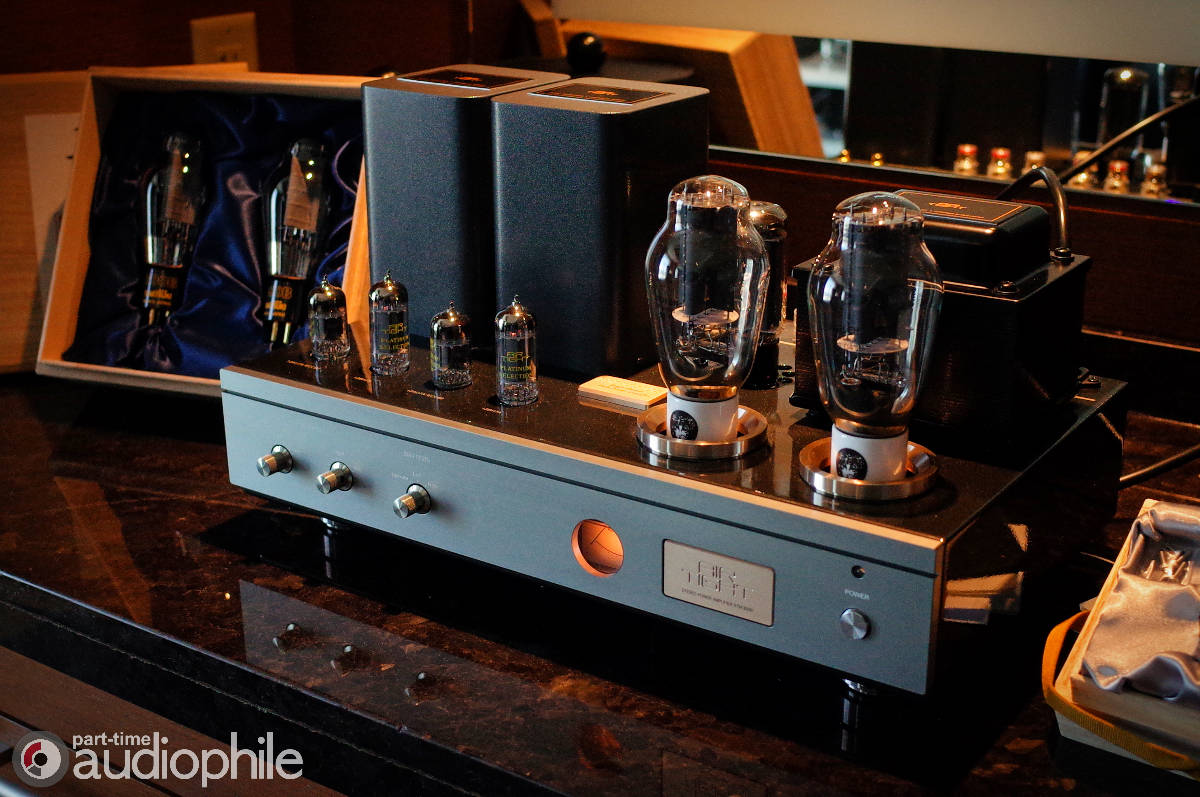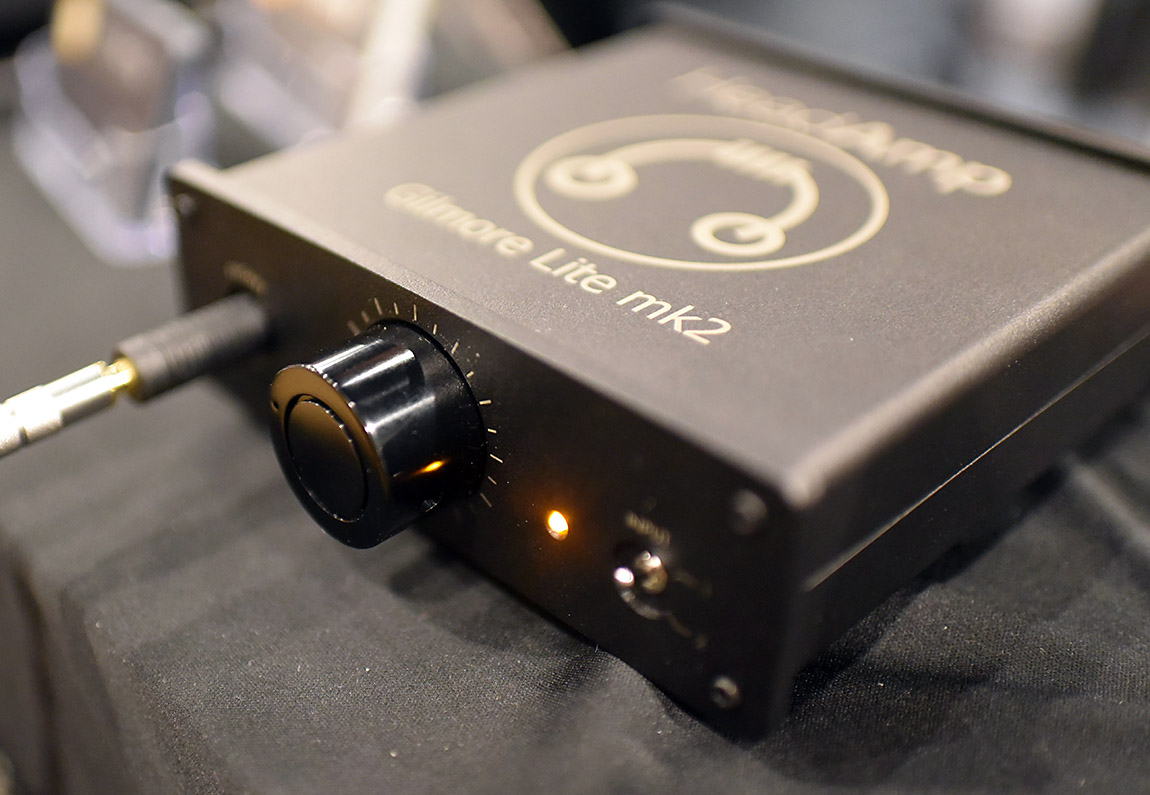
Some think they’re beautiful, others feel they emulate what artificial intelligence will look like in the far future. I’m in the former camp, and have always admired what Bowers & Wilkins do design-wise because the are a form-follows-function company in my eyes. Every line of the 800 D3 loudspeaker on demo during HiFi-Centre’s Vancouver Audio Festival is there for a reason, this is not an abstraction or pursuit of superfluity, this is modern industrial design at its core: Here in the service of high fidelity, and a slave to the recorded event. From the looks standpoint of the system, it didn’t hurt that these muscular hulks of transducers were being pumped with watts from a pair of svelte Devialet Expert Pros that were being run in mono-block mode at 440 watts/channel.

OK, so we’ve confirmed that I feel this was a good-looking set up. What about the sound? I’ve talked with several fellow music lovers about the Devialet Expert over the last year or so, and opinion seems to be firmly spilt down the middle with those who love their sound, and those who do not. I’ve heard them sound amazing – I’m a big fan – and I’ve heard them sound less-than-amazing, and I feel in my experiences it came down to proper cable/speaker curation, and whether or not the system being used was utilizing Devialet’s proprietary SAM® Speaker Active Matching or not – which I’ve found has made an impactful difference. This from Devialet’s website:
SAM® is an electro-acoustic revolution. For the first time ever, Devialet SAM technology guarantees a seamless match between your amplifier and connected speakers. Almost all multi-way loudspeakers generate delay caused by the bass diaphragm reacting slower to the audio signal than the tweeter does. Mechanical and technical measures help to minimize delay that would otherwise disrupt the evenness and spatial quality of sound. Preliminary laboratory work carried out via SAM® Lab enables us to identify sixty or more different parameters per speaker model.
SAM® analyzes transducer characteristics using laser technology. These include displacement, deformation, maximum displacement, speed and acceleration. By measuring passive filters, we can determine resonance (event bass-reflex and passive radiators) while factoring in the overall impact of casing and damping. Once this data is compiled, SAM® is able to produce a full physical behavioral model. The collected data also allows us to calculate the transducer SOA (Safe Operating Area). By doing so, SAM® offers permanent protection from overload, letting users reach higher volumes than ever before.


Because the Devialet integrated utilizes a unique analog-digital, hybrid-amplification technology (ADH®) where Class-D is slaved to Class-A, you get the air, sophistication, and delicacy that many have come to associate with pure Class-A topology, but with the crazy grunt, and dynamics of Class D. How? This from Devialet’s website:
Based on the same principle as advanced driver assistance, the idea of ADH is to maintain the analogue amplifier’s voltage generating function (to maintain their excellent audio performance levels), while entrusting the current generation function, and accordingly, that of generating power for the load, to an amplifier equipped with drastically superior energy efficiency: in this case a digital amplifier, otherwise known as a switch amplifier.
Thanks to our hybrid technology, the analog amplifier determines the load’s output voltage, just as it would in any audio system, without having to provide the associated current. It therefore maintains the same performance levels for both no-load and on load operations, a unique feat. For peak performance, whatever the powel level. Amplification in a class of its own.

Devialet packs a ton of other bleeding-edge technology into their systems, that for a room review I’m not getting into here, but I will say this: It all works seamlessly together. I’ve heard the new B&W 800 Series several times now, with different amplification, and as with the previous generation, they are startlingly transparent to source, and are one of the most uncoloured loudspeaker lines I’ve experienced. Featuring a diamond-coated tweeter element, a new Continuum mid-bass driver (eight years in the making), and the new Aerofoil bass units, the D3 is almost completely redesigned from the previous series. That said, for someone like me who prefers a bit of warmth to his sound (without sacrificing accuracy), source, pre-amplification, and amplification need to to be curated with that end goal of warming things up in mind. With the Expert that type of curation becomes moot because of the almost infinite amount of tailoring one can introduce to the mix.

The sound through the big D3s was incredibly fast, with lightning transient response on all types of instruments, and beautiful timbre/tone from piano, horns, and strings. Electronic music had an all-too-rare dose of human touch to its synthesized creation, and delicate vocal/acoustic renderings spoke with subtlety to air/space on voices, and decay on guitar, and percussion. This system did an excellent job with scale, generating life-size spatial facsimiles of the players on the recordings. All around, a truly enjoyable experience I look forward to recreating in my own living space at some point in the near future.




Wow what a gorgeous room set up!!